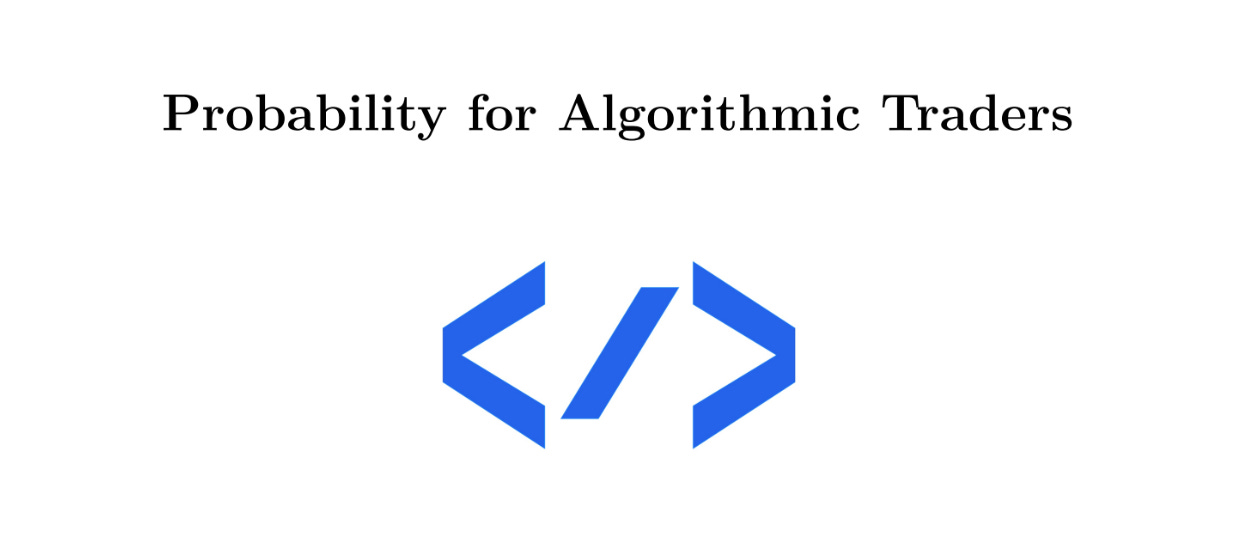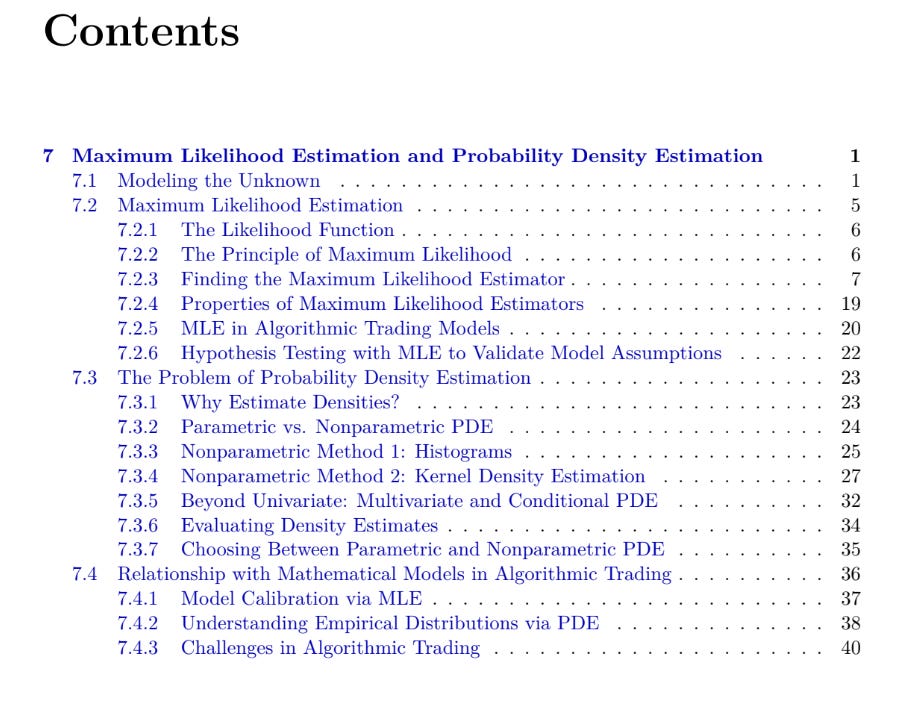Why poor estimation wrecks your models—and how to calibrate with precision in noisy markets
It’s easy to overfit backtests with perfect hindsight. But when live trades hit, those fragile estimates fall apart. The fix? Robust, adaptive estimation grounded in data—not assumptions.
This chapter hands you the tools to extract clean signals from messy realities.
What’s inside:
🔹 Maximum likelihood decoded: Build estimators from scratch and learn when MLE works—and when it misleads—in volatile, real-world data.
🔹 From point to full shape: Go beyond means and variances. Estimate full density shapes with kernel, histogram, and spline-based approaches that adapt to market structure.
🔹 Bandwith matters: Learn how to tune it. Fixed vs. adaptive bandwidth, rule-of-thumb vs. cross-validation—and why bad bandwidths kill predictive power.
🔹 Parametric vs. non-parametric: Compare Gaussian fits to KDE, lognormal to spline smoothers. You’ll see when models over-assume and when data-driven wins.
🔹 Live calibration in Python: Fit densities, score likelihoods, evaluate predictive loss—all with scripts that plug directly into your signal pipeline.
🔹 Avoiding overfitting hell: Regularization, penalized likelihood, and entropy-based methods to keep your estimators sharp—not overconfident.
This isn’t just estimation—it’s calibration for traders. A toolkit to decode probability from price action—when accuracy means survival.




